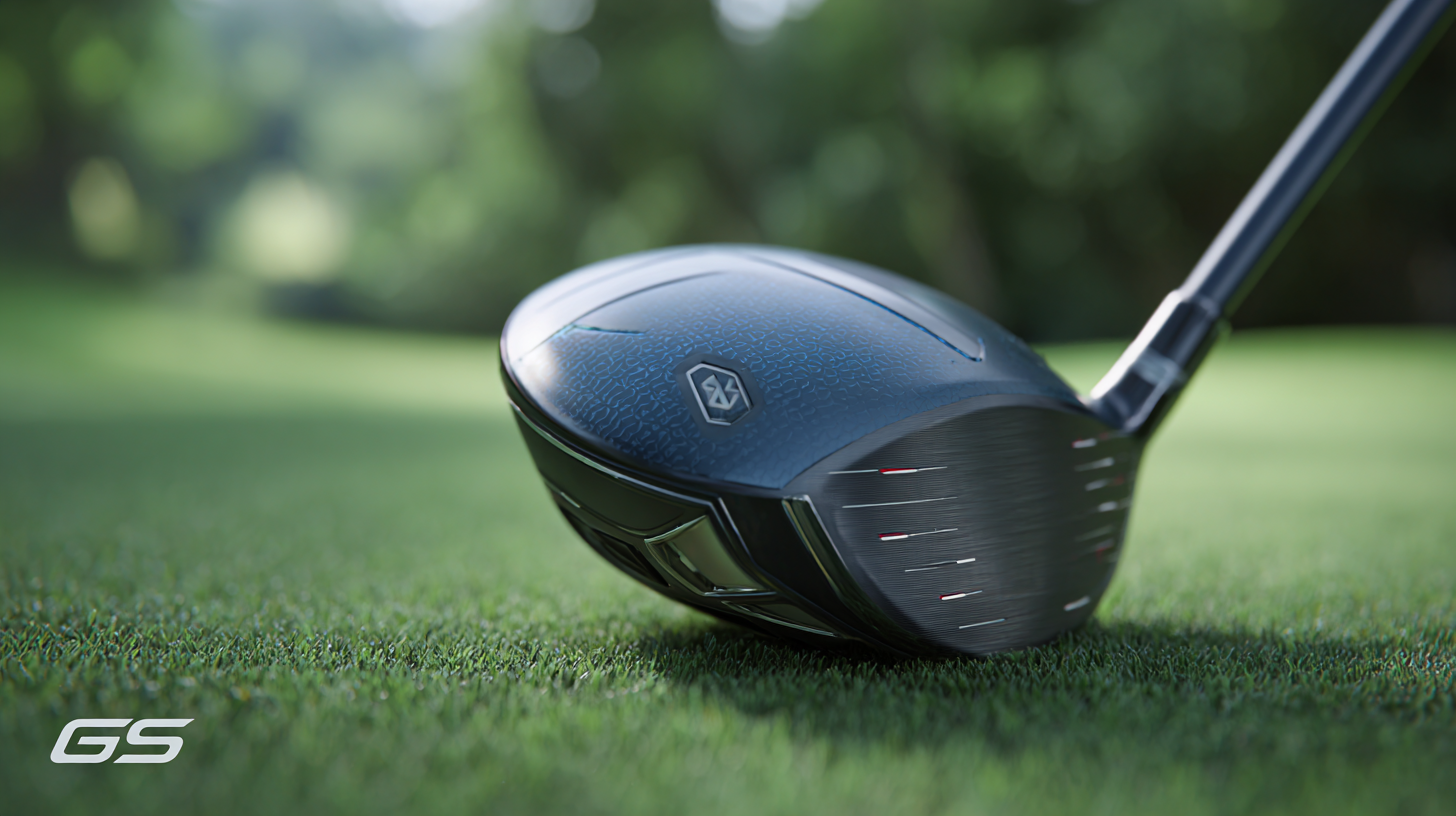

As we look towards 2025, the evolution of golf drivers is not just a testament to innovation but also a reflection of the increasing demand for performance-enhancing technologies in the sport. According to a recent report by Research and Markets, the global golf equipment market is projected to reach $12.2 billion by 2027, with a significant portion attributed to advancements in golf drivers and their alternatives. These emerging technologies, stemming from top manufacturing hubs like China, are reshaping how players approach the game, focusing on factors such as improved aerodynamics, adjustable weighting systems, and enhanced materials that promise greater distance and accuracy. As the game continues to attract a diverse and growing audience, understanding these trends will be crucial for golfers, manufacturers, and enthusiasts alike.

In 2025, the landscape of golf driver design is set to be transformed by cutting-edge technological innovations aimed at enhancing performance. Current reports indicate that the golf club industry is projected to grow to $2.67 billion by 2025, with a significant focus on improving golfer experience. One of the pivotal changes will be the incorporation of advanced materials such as carbon fiber and titanium alloys, which not only reduce weight but also enhance the club’s overall durability and power transfer. This shift promises to impact swing speeds significantly, with studies showing that players can expect an increase of up to 10% in distance with optimized driver designs.
Another critical advancement expected in driver innovation is the integration of artificial intelligence (AI) for personalized fitting processes. According to a survey by the National Golf Foundation, nearly 60% of golfers believe that equipment fitting affects their performance. AI-driven tools will analyze individual swing data and biomechanics to recommend custom driver specifications, enabling golfers to achieve the perfect balance of distance and accuracy. Additionally, improvements in adjustable weighting systems are anticipated, allowing players to modify the center of gravity and spin rates according to their specific playing conditions, ultimately leading to superior on-course results.

Artificial Intelligence (AI) is transforming the golfing landscape by enabling a higher level of customization in golf drivers and other equipment. With the global golf equipment market projected to reach USD 12.66 billion by 2025, the demand for personalized golf gear is at an all-time high (Statista). AI technologies, such as machine learning algorithms, are now being employed to analyze a player’s swing data, recommending specific adjustments in drivers that can significantly enhance performance. For instance, companies like Callaway and TaylorMade have started incorporating AI-driven systems that allow golfers to visualize their swing mechanics and receive tailored suggestions for equipment settings.
Additionally, AI aids in material selection and design, pushing the boundaries of what's possible in golf driver technology. According to a 2023 market study conducted by Grand View Research, optimized weight distribution and aerodynamics through AI modeling could potentially increase distance by 10% or more. As manufacturers use AI to simulate thousands of design variations, golfers can expect drivers that not only fit their unique swing profiles but also improve their overall game. This innovative intersection of AI and golf allows players to achieve unprecedented levels of performance, suggesting a future where equipment adapts dynamically to the individual’s play style.
As the golf industry moves toward 2025, a significant shift is occurring in the materials used to manufacture golf drivers. Traditionally dominated by metals and synthetic polymers, the emergence of sustainable materials is revolutionizing how golfers approach their equipment. Manufacturers are increasingly exploring bio-based composites and recycled materials, which not only reduce carbon footprints but also maintain performance standards. These innovations are paving the way for eco-friendly golf drivers that still deliver on the speed and accuracy golfers expect.

In addition to sustainable materials, brands are also introducing alternative technologies that enhance the game while being environmentally conscious. Advancements in 3D printing enable the customization of golf drivers, allowing players to optimize their equipment without generating waste from excess production. Likewise, the development of natural fibers, such as hemp or bamboo, is gaining traction, offering durability and flexibility while minimizing ecological impacts. As golfers become more aware of their environmental responsibilities, the demand for these innovative and sustainable alternatives is likely to shape the future of the sport, ensuring that golfing practices align with a more sustainable mindset.
The landscape of golf club manufacturing is undergoing a significant transformation, largely driven by the advent of 3D printing technology. This innovative approach allows for unprecedented customization possibilities, enabling manufacturers to create clubs tailored to the specific preferences and swing styles of individual golfers. Recently, we witnessed the launch of the first commercially available 3D-printed iron series, marking a pivotal moment in the industry. This limited edition production not only highlights the potential for customized performance but also represents a significant leap forward in manufacturing efficiency and precision.
Furthermore, the impact of 3D printing on golf extends beyond just club design. Athletes are increasingly adopting these custom clubs, with notable successes in competitive play thanks to their enhanced performance features. The ability to precisely adjust properties such as weight distribution and material composition opens new avenues for golfer optimization. As more brands explore the possibilities of 3D printing, it’s evident that this technology will continue to shape the future of golf equipment, providing golfers with not only improved performance but also unique, personalized gear that reflects their style and needs.
| Technology | Description | Impact on Performance | Customization Options | Sustainability |
|---|---|---|---|---|
| 3D Printing | Additive manufacturing allows for the creation of complex designs that traditional methods cannot achieve. | Enhances aerodynamics and weight distribution for improved swing dynamics. | Highly customizable club heads tailored to individual player specifications. | Uses less material and generates less waste compared to traditional crafting techniques. |
| Smart Materials | Materials that adapt to conditions such as humidity and temperature for performance optimization. | Provides consistent performance regardless of external conditions. | Ability to adjust flexibility and stiffness according to player preference. | Incorporates recycled materials, reducing environmental footprint. |
| Artificial Intelligence | AI-powered analytics provide insights into swing mechanics and club performance. | Helps players make data-informed adjustments for better outcomes. | AI-driven customization based on individual swing analysis. | Encourages responsible sourcing of materials through data insights. |
| Biomimicry | Design principles inspired by nature to enhance performance and efficiency. | Optimized for stability and accuracy by mimicking biological structures. | Unique designs that reflect individual playing styles and techniques. | Utilizes natural materials and processes to reduce environmental impact. |
As the world of golf continues to evolve, the integration of smart technology into golf equipment is becoming increasingly prominent. By 2025, we can expect a significant transformation in how golfers interact with their clubs and their overall performance on the course.
Wearable technology, such as smartwatches and fitness trackers, will play a crucial role in enhancing the golfer's experience. These devices can provide real-time data on swing mechanics, heart rate, and even environmental conditions, allowing players to make informed decisions and tailor their gameplay strategies.
In addition to wearables, golf equipment manufacturers are developing clubs equipped with advanced sensors that can analyze every aspect of a swing. This data can be synchronized with mobile apps, offering personalized feedback and training suggestions. As golfers embrace these innovations, the traditional notion of the game is being redefined. The combination of smart technology and golf gear will not only improve performance but also engage players in ways that were previously unimaginable, creating a perfect blend of tradition and modernity on the greens.